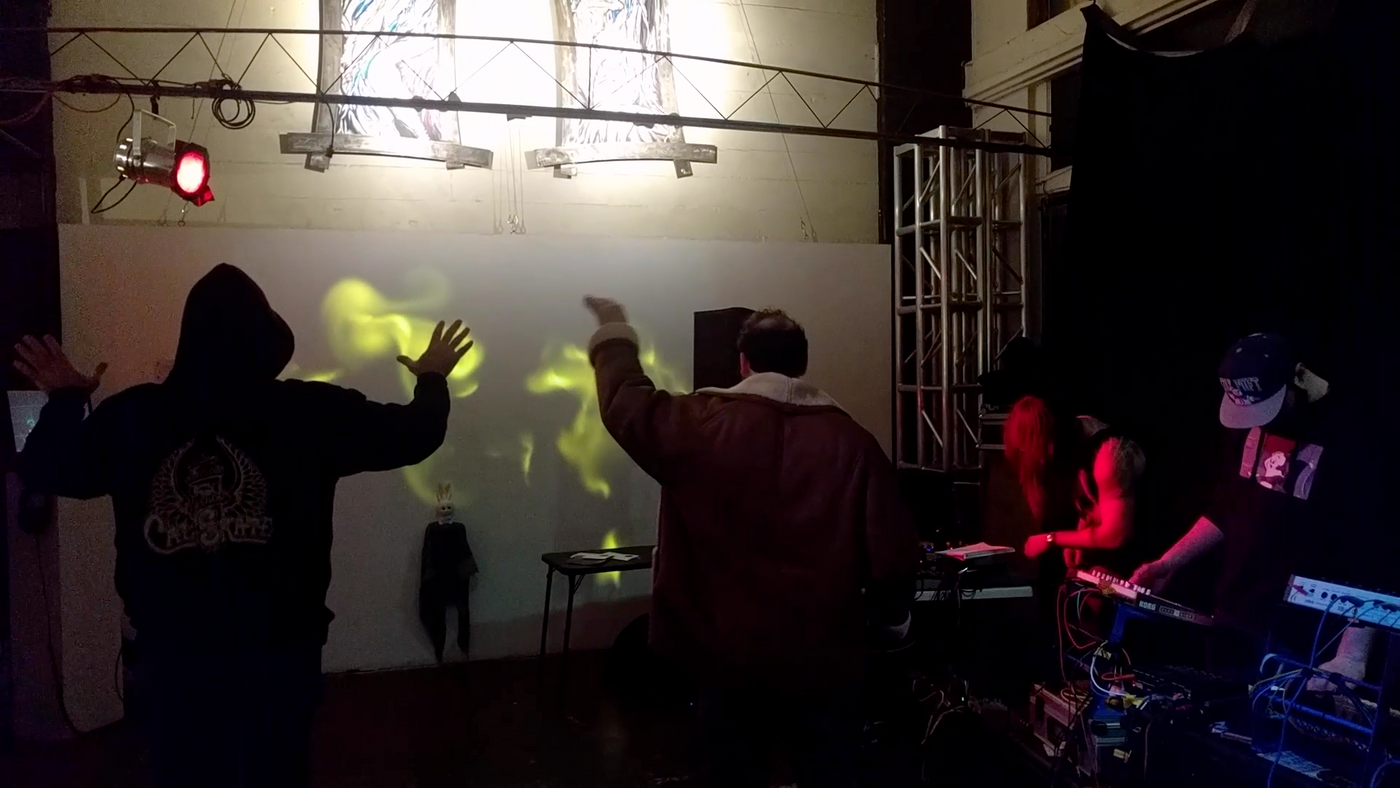Byte Me 6.0
Shadows & Echoes
Shadows & Echoes was a combination piece; Shadows the visual component and Echoes the audio component.
Shadows
Shadows was a fluid dynamics simulation that was fed motion data from a camera hidden inside of a stuffed white rabbit. The white rabbit sat against the wall, looking out into the crowd. Its vision, cast onto the wall, gave the audience a mirror to see their shadow-selves.
The simulation was displayed on the wall by a projector hidden among hanging cloth and lights. Edge detection was performed on the rabbit's vision and fed into the fluid simulation. The motion of edges created a swirling fluid of light. The parameters of the simulation were tweaked so that the edges and the outlines of the viewers were constantly in flux, smearing their dark figures, but not so chaotic that they could not see themselves; their shadow-selves constantly on the edge of periphery, never clear, but never lost.
Many viewers needed time to comprehend what they were seeing. Is that me? Or am I imagining things? Unaware that it was a projector affecting the lights or that the white rabbit contained a camera, viewers were momentarily enchanted, dancing around to understand their shadows and the source of light that created them.
Echoes
Echoes used the same core technology as Shadows, but the motion data was fed to a music-generation system instead of a fluids simulation. This music-generation system was an improvement on the one used for Music in Motion
Sixteen zones were setup in a 4x4 grid. Each zone tracked motion and detected major changes in direction, signifying a beat for that zone. The larger the change in direction the harder the beat. The history of beats was tracked across all zones to normalize on a global beat. If a change of motion, a beat, was detected in a zone that synced with the global beat, it was emphasized more. Moving at a steady rhythm built up the soundscape.
Digital musicians were given zones to monitor.
The pianist focused on the four zones where the dancer's hands would be, two for the left, two for the right. Beats in these zones would trigger the pianist to play. Chord progressions and melodies were composed using rules of music theory to sound harmonious or discordant depending on the symmetry of movement. Larger beats resulted in more sound and more keys in the chord were played. Smaller changes in direction or off-beat movement gave in a gentle melody.
A vocalist focused on all the zones. More motion would create more vocals. Asymmetrical motion in the zones resulted in more fluctuations in tone and more distortion on the digital effects.
The drummer focused on lower zones, near the dancer's hips and legs. Each zone had a different drum type. Movement in the zone triggered a hit on that drum type. A big change in direction meant a harder hit.
The history of beats was used to make a loop that faded over time. Music and beat patterns generated by a previous dancer would continue for subsequent dancers. If the movement of the new dancer synced with previous, that beat would be emphasized more. Do you resonate with the recent movements presented to you and build on them; emphasize them? Or do you let those rhythms fade and dance to the beat of your own drum?
